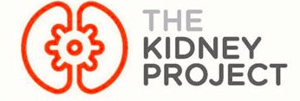The Kidney Project Hopes to Change the Face of ESRD
The need is staggering. Two million people worldwide are estimated to suffer from end-stage renal disease (ESRD), and the number of patients continues to increase at a rate of 5-7% per year. Taiwan, Japan, Mexico, the United States, and Belgium currently have the  highest prevalence of ESRD. Mortality rates vary depending on the ESRD treatment. After one year of treatment, those on dialysis have a 20-25% mortality rate, and a 5-year survival rate of 35%.
highest prevalence of ESRD. Mortality rates vary depending on the ESRD treatment. After one year of treatment, those on dialysis have a 20-25% mortality rate, and a 5-year survival rate of 35%.
The best current treatment for ESRD is kidney transplantation. Its five-year survival rate for transplant recipients is over 80%. However, kidney transplantation requires a donor match, major surgery, and a lifetime regimen of immunosuppressant medications to prevent rejection. Moreover, there is an acute shortage of donor organs. There are more than 100,000 ESRD patients on the U.S. transplant wait list, but, in 2014 there were only 17,105 donor kidneys available for transplant and less than 70,000 donor kidneys available worldwide.
Ten years ago, a group of scientists and clinicians from universities and laboratory across the United States convened to try to find a solution to this problem. They launched The Kidney Project. Their goal is to create a small, surgically implanted, and free-standing bioartificial kidney to treat end stage renal disease (ESRD).
The Kidney Project is now in its third phase with clinical trials slated to begin soon. The coffee cup size bioartificial kidney will process blood continuously for 24 hours per day, which would avert the inconveniences and morbidities associated with intermittent hemodialysis.
The bioartificial kidney consists of two modules that work together to get rid of a body’s wastes.
- First, a hemofilter module processes incoming blood to create a watery ultrafiltrate that contains dissolved toxins as well as sugars and salts.
- Second, a bioreactor of kidney cells processes the ultrafiltrate and sends the sugars and salts back into the blood. In the process, water is also reabsorbed back into the body, concentrating the ultrafiltrate into “urine,” to go to the bladder for excretion.
Surgically implanted and powered by the patient’s own blood pressure, the bioartificial kidney does not require anti-rejection drugs as it performs many of the metabolic, endocrine, and immunological functions of a healthy kidney.
It is the hope that the bioartificial kidney will give ESRD patients new hope beyond the short-term solution of renal dialysis and the longer-term, but impermanent, solution of a living kidney transplant for which donor organs are limited.
The project is headed by Shuvo Roy, PhD, a bioengineer and professor in the Department of Bioengineering and Therapeutic Sciences, Schools of Pharmacy and Medicine, University of California, San Francisco (UCSF and co-directed by William Fissell, MD, at Vanderbilt University Medical Center. Team members include scientists, engineers, and clinicians from across the United States who bring together the biological, engineering, medical, and manufacturing expertise needed to create the bioartificial kidney. They work in small private businesses and in labs at the University of CA, San Francisco; Cleveland Clinic; Ohio State University; Pennsylvania State University; University of Michigan and Case Western Reserve University.
Reference: https://pharm.ucsf.edu/kidney/device/faq




